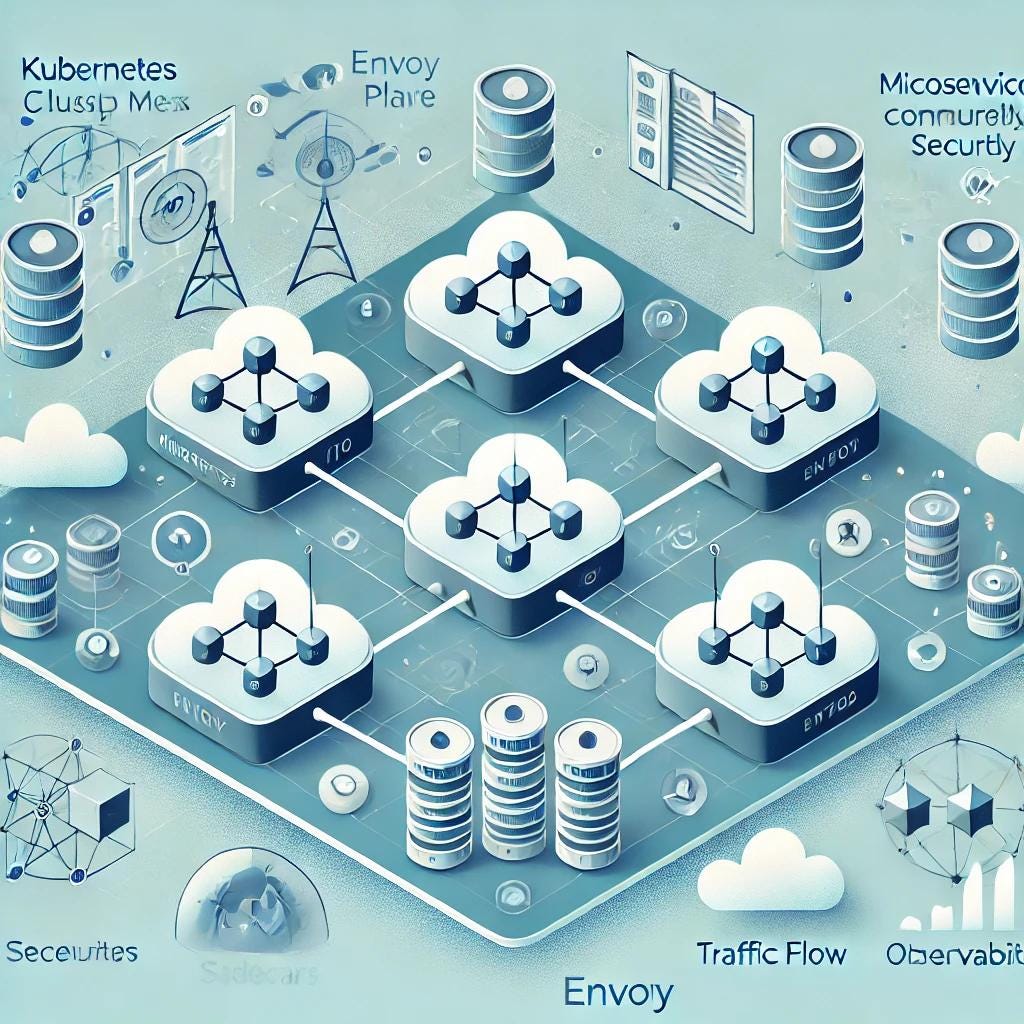Service Mesh Implementation with Istio
Istio is an open-source service mesh platform designed to simplify the management of microservices communication within distributed systems. It enhances networking between services by providing features like traffic management, security enforcement, and observability tools. With the increasing complexity of microservices architectures, managing service-to-service communication becomes challenging. Istio addresses these challenges by abstracting the networking layer, enabling developers and operators to focus on application logic while Istio handles routing, load balancing, monitoring, and securing service interactions.
You will learn how to deploy Istio in a Kubernetes cluster to gain hands-on experience with implementing a service mesh. Starting with the installation of Istio and its components, you will progress through deploying sample applications, configuring advanced traffic management strategies, and exploring observability and security features. By the end of this guide, you will have a comprehensive understanding of Istio and its capabilities, empowering you to effectively manage microservices communication and optimize Kubernetes-based applications.
Istio and Service Mesh
Modern applications are increasingly built using microservices, where each functionality of the application is divided into smaller, independently deployable services. While this approach offers scalability, flexibility, and maintainability, it also introduces significant challenges in communication, observability, and security between services.
This is where a service mesh like Istio becomes invaluable. Istio is an open-source platform that acts as a layer between your application’s services and the underlying network. By abstracting the complexities of service-to-service communication, Istio simplifies traffic management, secures communication using mutual TLS (mTLS), and provides observability tools to monitor and troubleshoot service interactions.
Istio is composed of two key components:
Control Plane: Manages configuration and policies for the data plane, providing centralized control over routing, security, and telemetry.
Data Plane: Consists of proxies (usually Envoy) deployed alongside application services, intercepting and managing all network traffic.
With Istio, you gain granular control over how your microservices communicate, enabling you to improve reliability, enforce security, and gain deep insights into application performance.
Prerequisites
Before deploying Istio, you need a functioning Kubernetes cluster and several essential tools installed on your local system. The following prerequisites ensure your environment is ready for the hands-on steps in this tutorial.
Kubernetes Cluster: A cluster with at least three nodes is recommended to deploy Istio and sample applications. You can use a managed Kubernetes service like Google Kubernetes Engine (GKE), Amazon Elastic Kubernetes Service (EKS), Azure Kubernetes Service (AKS), or a local setup like Minikube or Kind.
kubectl CLI: The Kubernetes command-line tool, kubectl, is required to interact with your cluster. You can install it by following the official documentation.
Helm CLI: Helm, the Kubernetes package manager, is necessary to deploy some Istio components and addons. Install Helm by following the instructions on its official website.
Istio CLI: The istioctl tool is the official CLI for managing Istio installations and configurations. You will install this tool in the preparation steps.
Basic Knowledge: Familiarity with Kubernetes concepts like pods, services, deployments, and namespaces is important for following the tutorial. Understanding YAML configuration files will also be beneficial.
Preparing Your Environment
With the prerequisites in place, it’s time to prepare your environment for deploying Istio.
Confirm Your Kubernetes Cluster is Running: Check the status of your cluster to ensure it is properly set up and reachable:
kubectl cluster-info
kubectl get nodesThese commands will display details about your Kubernetes control plane and the nodes available in your cluster.
Install the Istio CLI: Download and install the Istio CLI (istioctl), which simplifies the process of installing and managing
Istio:
curl -L https://istio.io/downloadIstio | sh -
cd istio-<version> # Replace <version> with the downloaded version
export PATH=$PWD/bin:$PATHVerify the installation by checking the version:
istioctl versionSet Up Helm (Optional): If you plan to use Helm for deploying Istio addons or custom charts, ensure it is installed:
helm versionCheck Namespace and Context: Confirm you are working in the correct Kubernetes namespace and context:
kubectl config current-context
kubectl get namespacesFor this guide, we will use the default namespace, but you can create a new namespace if needed. Now that your environment is ready, you are equipped to deploy Istio in your Kubernetes cluster. Next, you will install Istio’s control plane and configure your cluster for Istio’s service mesh capabilities.


